Tatio geysers are one of the 'must-sees' while in the Atacama. Situated right next to the border with Bolivia at a height of 4200 metres above sea-level, Tatio is the third biggest geyser field in the world, with over 80 active geysers (according to Wikipedia).
Tours from San Pedro set out at around 4am to arrive at the geysers just before dawn - the time when there is the greatest difference in temperature between the cold morning air and the hot molten rock below.
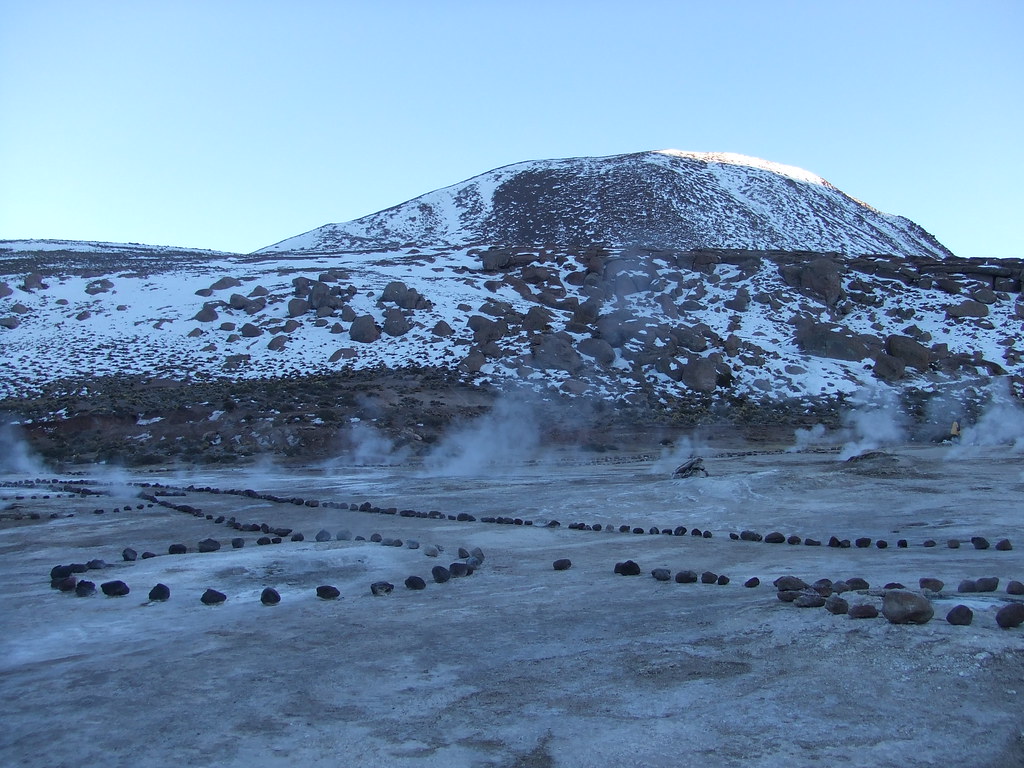 |
| Just before dawn |
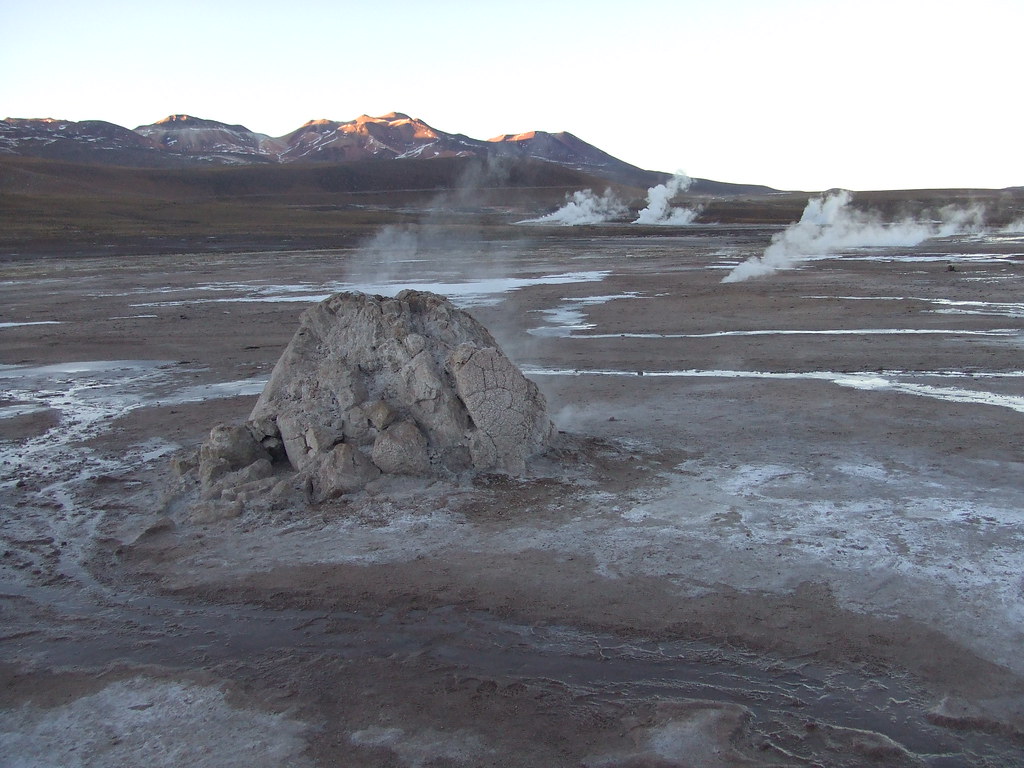 |
| One of the oldest geysers |
We arrived as the sun was just starting to come up, with an outside temperature of minus 8 degrees centigrade.
Our guide took us to see different types of geysers - some of the oldest with mini volcanoes around them, others that had become covered and so were trying to find new ways of breaking through the earth's crust.
A surprise for me, was that I had expected to see fountains of water shooting up into the air. While it wasn't that dramatic, it was nonetheless a very surreal landscape, of cracks in the earth's surface, steam and sulphuric smoke and water bubbling up out of the ground.
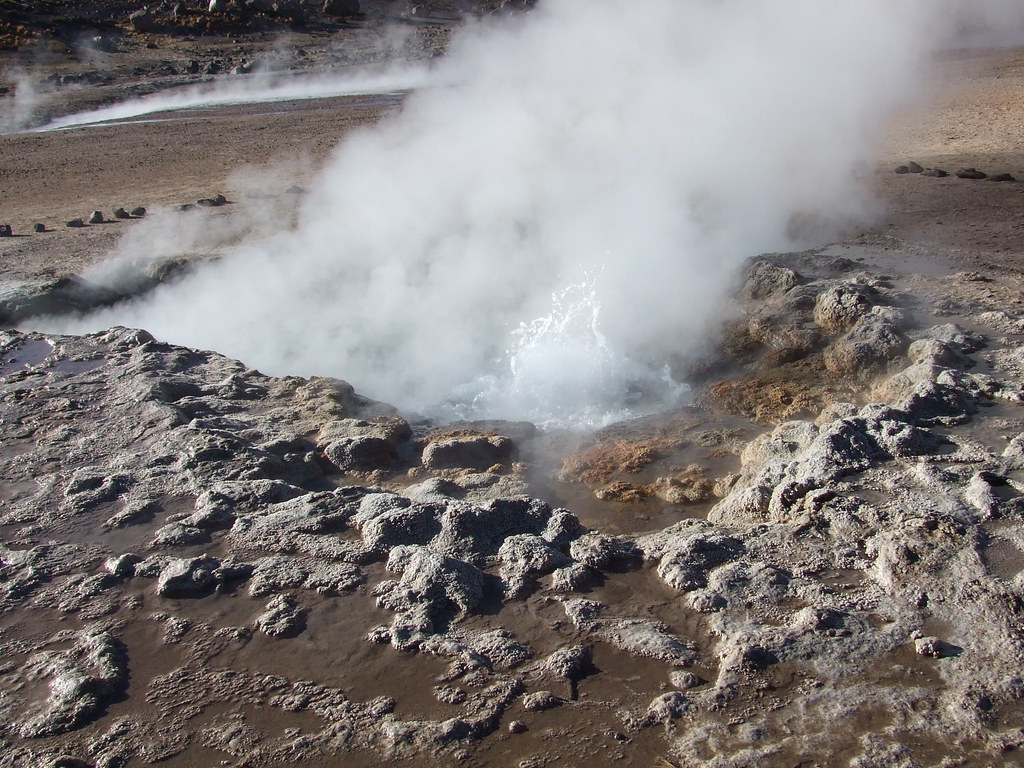 |
| Bubbling geyser |
After a brief stroll, we had breakfast; hard boiled eggs and warm milk - both prepared in the steam of one of the geysers. Refreshed, and with the sun now flooding the valley, we moved onto another part of the field where there was a hot spring pool. Carlos took a dip while I ambled slowly around, finding it difficult to breath with the altitude and the cold.
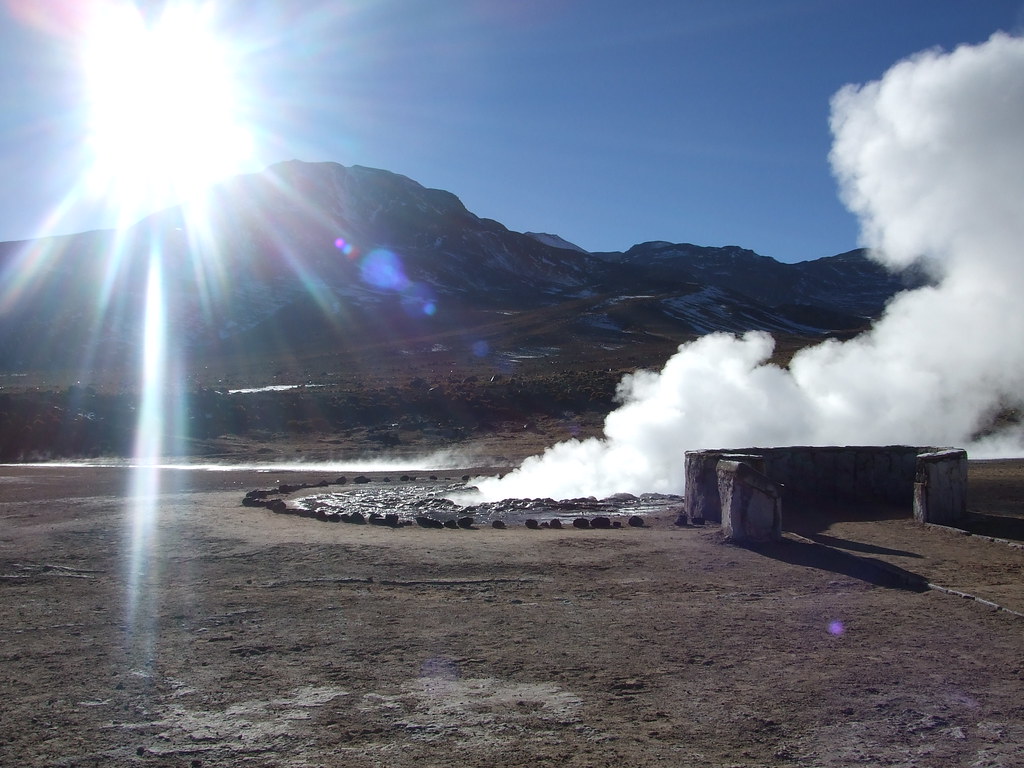 |
| The sun flooded the steam-filled valley |
 |
| Vicuñas |
At around 9.30am, we began our way back down the mountain, this time in full sunlight so we could take in our surroundings. Our first stop on the journey was to see vicuñas - similar to a llama. We saw 36 animals in total made up of two packs - a very rare sight. They were fighting as we drew close, before our bus and the vicuñas entered into a staring match.
Continuing on a wildlife theme, next we tried to spot a large greenish rabbit, which camouflages itself brilliantly amongst the rocky cliffs. Typically, I was the only person on the bus who couldn't spot one, but I've since seen a photo! Then a little further along the valley, we visited some wetlands, with giant coots among other birds.
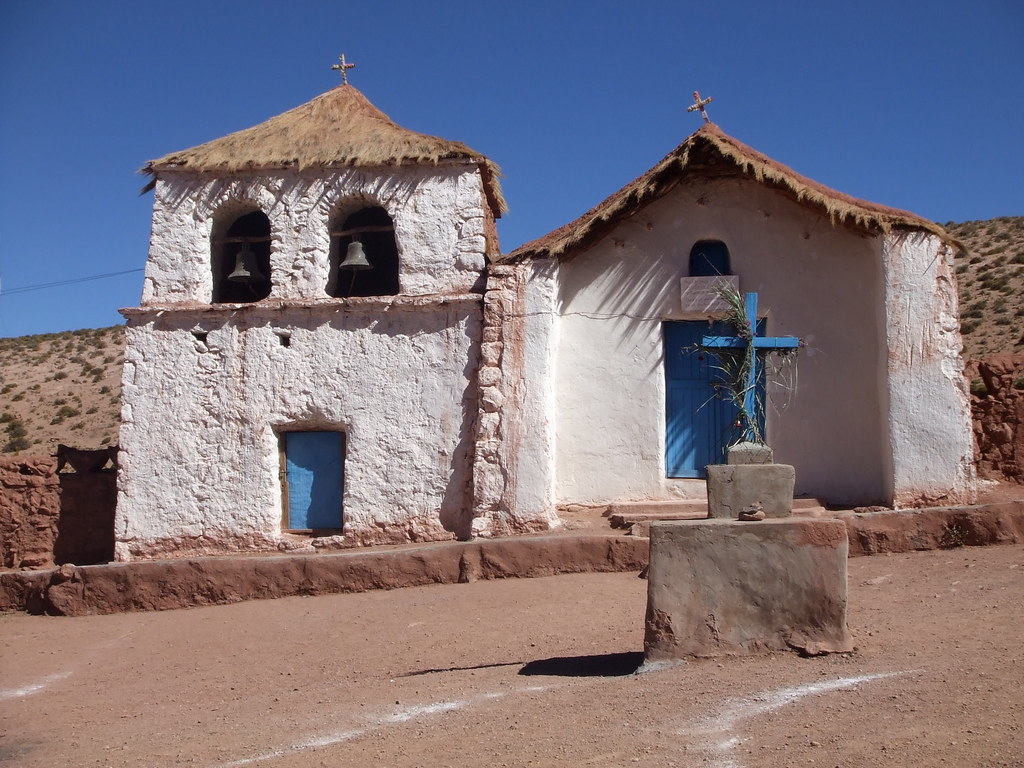 |
| The village church |
Still at around 4000 metres above sea level, we made our final stop at a tiny village that had about 6 houses and an
asado (barbecue) on the go for the tourists. Its speciality was llama
anticuchos, that's kebab skewers, which were seriously delicious, although that did bring a rather abrupt end to our nature watching!






No comments:
Post a Comment